Reviews
Russ Mayberry
USA, 1979
Credits
Review by Tyler Wilcox
Posted on 30 August 2010
Source Disney Home Entertainment DVD
Categories Favorites: Time Travel
Out of all the pseudo-scientific explanations of time travel that Hollywood has put forth over the years, surely this has to be the most half-assed:
That ol’ Albert Einstein — he was right after all!
The line is uttered by Tom Trimble (played by Dennis Dugan1), a NASA scientist who, along with his look-alike android Hermes (also played by Dugan), has been transported from late 1970s Cape Canaveral to Arthurian England. His spacecraft, you see, was going faster than the speed of light, and, well … Einstein!
As you may have surmised by now, Unidentified Flying Oddball is ever-so-loosely based on Mark Twain’s A Connecticut Yankee in King Arthur’s Court, a novel whose fish-out-of-water premise has proven irresistible to filmmakers for close to a century now, with the first (now lost) adaptation appearing during the silent era and the most recent, Black Knight starring Martin Lawrence, released in 2001. Over the years, actors ranging from Will Rogers to Whoopi Goldberg have taken on Twain, bringing the 20th century to Camelot, with varying degrees of comedic success. The basic plot - a modern day man travels back in time to medieval times - allows these comic personalities to assume the role of an outsider who possesses the ultimate insider knowledge: he or she knows what the future holds. What he or she does with this powerful knowledge is, hopefully, where the comedy comes from. Of course, the basic visual element of these adaptations is part of the appeal, too. Just putting a street smart African American (Black Knight), or a spoiled 1990s tween (A Kid In King Arthur’s Court), or, as in the film at hand, an astronaut, in the incongruous setting of Camelot makes for an instantly zany image.
But back to that ol’ Albert Einstein. The makers of Unidentified Flying Oddball weren’t doing their source material a terrible disservice by not putting a great deal of thought into the science behind time travel. The author himself wasn’t very concerned with the topic: Twain’s titular Connecticut Yankee, Hank Morgan, is hurtled back to the dark ages after being bonked on the noggin during a scuffle. Though it’s often named as one of the early examples of time travel fiction, what Twain was mainly concerned with was rigorously satirizing both romanticized southern notions of Arthurian chivalry, and the self-righteous mentality of late 19th-century Americans. As literature goes, A Connecticut Yankee In King Arthur’s Court is a work more in the vein of Jonathan Swift than Jules Verne.
Unsurprisingly, there’s not much that’s Swiftian about Unidentified Flying Oddball. The film is mainly just a straightforward comedy-adventure story, with Trimble and Hermes aiding King Arthur (an embarrassed-looking Kenneth More) against a coup organized by the dastardly Merlin (Ron Moody, who would reprise this role in the 1995 film A Kid In King Arthur’s Court) and the even-more dastardly Sir Mordred (Jim Dale). This is a pretty long ways off from Twain’s downright revolutionary protagonist, who basically attempts to remake Arthurian England in the USA’s image—and largely succeeds. Trimble is a simple guy with no agenda whatsoever. “I’m just here to help, King,” he tells Arthur.
One might imagine plenty of period-specific yuks derived from a “Me Decade” male butting heads with the Knights of the Roundtable. (A funky disco joust! A bellbottomed suit of armor! Come on, this shit writes itself.) But alas, such fertile territory is, for the most part, ignored. There are a few exceptions, and they make for the most enjoyable moments of the film. Trimble’s character is introduced standing on his head, practicing transcendental meditation, a joke that surely would have felt dated already in 1979, but hey, I laughed. Later, Trimble tries (unsuccessfully) to woo a fair damsel into his spaceship with the promise of “a few LPs you probably haven’t heard yet—Fleetwood Mac, the Rolling Stones?” Oh, and then there’s the film’s (odd for an otherwise family friendly flick) running pornography gag. Hermes, Trimble’s android double, is a big fan of the female form, and, anticipating a long interstellar journey, packs a copy of the latest issue of Playtime (a thinly veiled Playboy take-off). Trimble discovers Hermes’ secret stash, confiscates the nudie mag - porn is bad for robots - and then uses it to bribe various peasants into helping him out. The lusty, goggle-eyed stares of these medieval denizens when presented with 20th century erotica are unsettling, to say the least. This is a Disney film, after all.
Kinkier still is the love triangle that develops between Trimble, Hermes, and the aforementioned fair damsel, Alisande (Sheila White). After Hermes plants a kiss on her lips prior to a joust against Sir Mordred (in which the android is roundly defeated), Alisande waffles in her preference for the human versus the humanoid. Were the filmmakers making a devastating commentary on late 20th century man’s loss of essential humanity, suggesting that a robot could be seen as more human than human? Nah, probably not. As depicted here, Hermes is a clichéd, monotonous android—even a medieval bumpkin would be able to pick up on his inhumanity, despite his love of porn. And anyway, Alisande ends up choosing Trimble as her knight in shining spacesuit. Hermes doesn’t seem to mind.
The film winds up with Trimble on a jetpack defending Camelot against a horde of Sir Mordred’s men. Featuring special effects that would make Ed Wood blanche, the sequence is certainly one of the most boring, confusingly edited sieges ever filmed. At this point, the viewer should expect nothing less. Unidentified Flying Oddball is half-assed to the very last.
- While Dennis Dugan never reached any great heights of superstar fame as a performer, he has been a behind the scenes force for other second-tier comedic actors: his directorial oeuvre includes the Adam Sandler opuses Happy Gilmore, Big Daddy, and You Don’t Mess With The Zohan, along with the first Problem Child film and I Now Pronounce You Chuck and Larry.↩
More Favorites: Time Travel
-

Bill and Ted’s Excellent Adventure
1989 -
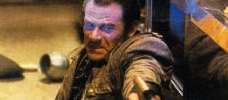
Trancers
1985 -

The Time Machine
1960 -

Groundhog Day
1993 -

Warlock
1989 -

The Navigator
1988 -
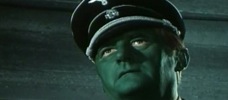
Tomorrow I’ll Wake Up and Scald Myself with Tea
1977 -

The Spirit of ‘76
1990 -
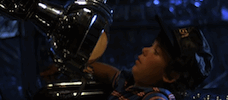
Flight of the Navigator
1986 -

La jetée
1962 -

Twelve Monkeys
1995 -

Beastmaster 2: Through the Portal of Time
1991 -
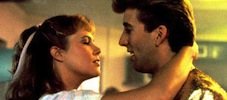
Peggy Sue Got Married
1986 -
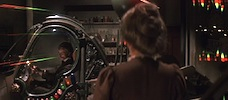
Time After Time
1979 -

Somewhere in Time
1980 -

Back to the Future
1985 -

Back to the Future Part II
1989 -

Back to the Future Part III
1990 -
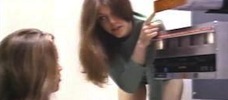
Idaho Transfer
1973 -
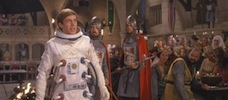
Unidentified Flying Oddball
1979 -

Slaughterhouse-Five
1972 -

The Lake House
2006 -
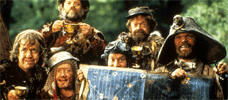
Time Bandits
1981 -

Doctor Who
1963–present -

Doctor Who
1963–present
We don’t do comments anymore, but you may contact us here or find us on Twitter or Facebook.



